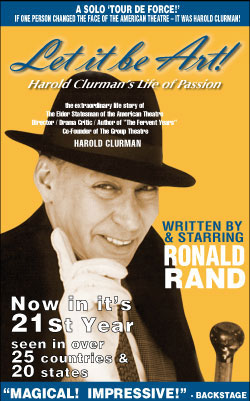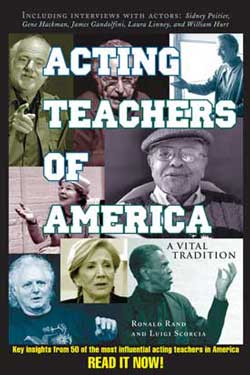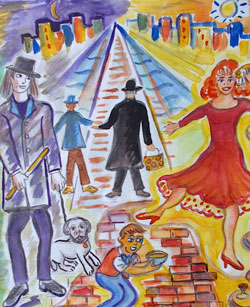Paul Tazewell
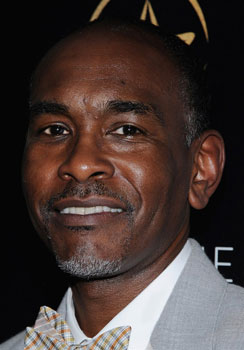 Starting his Broadway career with the groundbreaking musical, “Bring in Da Noise, Bring in ‘Da Funk” directed by George C. Wolfe, he followed that with work on the original Broadway productions of the Pulitzer Prize and Tony Award-winning “Hamilton.” Mr. Tazewell received the 2016 Tony Award for Best Costume Design. Mr. Tazewell’s recent work includes the feature film, “Harriet,” NBC’s “Jesus Christ Superstar Live in Concert!” (Costume Designers Guild Awards Nominee, Emmy Award Nominee), “The Immortal Life of Henriette Lacks” directed by George C. Wolfe, and Steven Spielberg’s upcoming film, “West Side Story.” He designed the costumes for “The Wiz: Live” with Queen Latifah, Mary J. Bilge and Chanice Williams on NBC. He’s been designing costumes for theater dance opera and film for over twenty-five years across America and around the world. His designs on Broadway include “Ain’t Too Proud – The Life and Times of The Temptations” (Tony Award Nominee), “Summer: The Donna Summer Musical (NAACP Theatre Award Nominee), “Escape To Margaritaville” “Doctor Zhivago,” “Sideshow,” “Jesus Christ Superstar,” “Memphis,” “In The Heights,” “Lombardi,” “A Streetcar Named Desire,” “The Color Purple,” “A Raisin In The Sun,” “Caroline Or Change.” In London’s West End, his work includes “Hamilton (Olivier Award Nominee), “Memphis,” and “Caroline, Or Change.” National Tours “Hamilton,” “Escape To Margaritaville,” “Flashdance: The Musical,” “Memphis: A New Musical,” “In The Heights,” and “The Color Purple.” He has designed productions from many prestigious institutions including The Metropolitan Opera, San Francisco Opera, Pacific Northwest Ballet Company, English National Opera, Bolshoi Ballet, Guthrie Theater, Washington D.C.'s Arena Stage, Stratford Shakespeare Festival and The Kennedy Center. His theater designs include “Kings,” Delacorte’s “Julius Caesar,” “Privacy,” “Flesh and Blood, “Harlem Song,” “Sousatzka,” “Hollywood,” “ One Flea Spare,” “Blade to the Heat,” and “Fetch Clay, Make Man.” He has given numerous class master classes at universities across the country and taught costume design as a guest instructor at NYU. He was on the faculty of Carnegie Mellon University from 2003 to 2006. He has received many recognitions for his work. In the same year, 2016, he received both a Tony Award, for “Hamilton,” and the Emmy Award for “The Wiz! Live” on NBC. Other notable honors include two Lucille Lortel Awards, four Helen Hayes Awards, a Princess Grace Foundation Fellowship, and The Princess Grace Statue Award. The Metropolitan Museum of Art also invited him to participate in The Artist Project. Recently Theatre Art Galleries held the exhibit “Tazewell: Three Generations: Three Voices,” showcasing Paul Tazewell, Tazewell’s mother, Barbara Tazewell, and his nephew, Nate Tazewell, an up-and-coming illustrator.
Starting his Broadway career with the groundbreaking musical, “Bring in Da Noise, Bring in ‘Da Funk” directed by George C. Wolfe, he followed that with work on the original Broadway productions of the Pulitzer Prize and Tony Award-winning “Hamilton.” Mr. Tazewell received the 2016 Tony Award for Best Costume Design. Mr. Tazewell’s recent work includes the feature film, “Harriet,” NBC’s “Jesus Christ Superstar Live in Concert!” (Costume Designers Guild Awards Nominee, Emmy Award Nominee), “The Immortal Life of Henriette Lacks” directed by George C. Wolfe, and Steven Spielberg’s upcoming film, “West Side Story.” He designed the costumes for “The Wiz: Live” with Queen Latifah, Mary J. Bilge and Chanice Williams on NBC. He’s been designing costumes for theater dance opera and film for over twenty-five years across America and around the world. His designs on Broadway include “Ain’t Too Proud – The Life and Times of The Temptations” (Tony Award Nominee), “Summer: The Donna Summer Musical (NAACP Theatre Award Nominee), “Escape To Margaritaville” “Doctor Zhivago,” “Sideshow,” “Jesus Christ Superstar,” “Memphis,” “In The Heights,” “Lombardi,” “A Streetcar Named Desire,” “The Color Purple,” “A Raisin In The Sun,” “Caroline Or Change.” In London’s West End, his work includes “Hamilton (Olivier Award Nominee), “Memphis,” and “Caroline, Or Change.” National Tours “Hamilton,” “Escape To Margaritaville,” “Flashdance: The Musical,” “Memphis: A New Musical,” “In The Heights,” and “The Color Purple.” He has designed productions from many prestigious institutions including The Metropolitan Opera, San Francisco Opera, Pacific Northwest Ballet Company, English National Opera, Bolshoi Ballet, Guthrie Theater, Washington D.C.'s Arena Stage, Stratford Shakespeare Festival and The Kennedy Center. His theater designs include “Kings,” Delacorte’s “Julius Caesar,” “Privacy,” “Flesh and Blood, “Harlem Song,” “Sousatzka,” “Hollywood,” “ One Flea Spare,” “Blade to the Heat,” and “Fetch Clay, Make Man.” He has given numerous class master classes at universities across the country and taught costume design as a guest instructor at NYU. He was on the faculty of Carnegie Mellon University from 2003 to 2006. He has received many recognitions for his work. In the same year, 2016, he received both a Tony Award, for “Hamilton,” and the Emmy Award for “The Wiz! Live” on NBC. Other notable honors include two Lucille Lortel Awards, four Helen Hayes Awards, a Princess Grace Foundation Fellowship, and The Princess Grace Statue Award. The Metropolitan Museum of Art also invited him to participate in The Artist Project. Recently Theatre Art Galleries held the exhibit “Tazewell: Three Generations: Three Voices,” showcasing Paul Tazewell, Tazewell’s mother, Barbara Tazewell, and his nephew, Nate Tazewell, an up-and-coming illustrator.
What brings you the greatest joy in creating costumes?
I think overall it’s bringing an idea to life with three-dimensional reality. I’m really excited about the element of research that is involved, the drawing out of an idea, the collaboration it takes, the types of fabrics I use. It all feeds me; it’s a good match up with who I am.
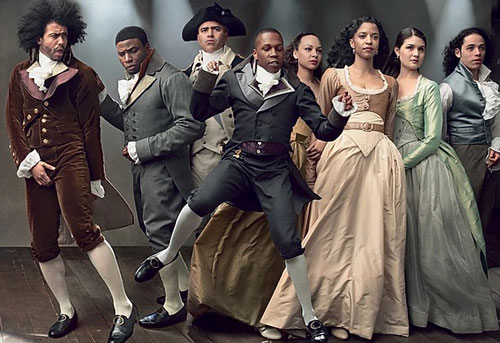
Cast of “Hamilton” (photo: Annie Lebovitz, “Vogue”, June 2015 – paultazewelldesign.com)
Do you consider yourself a story-teller?
Absolutely. In giving characters the clothing that they wear, I’m giving an audience the first impression of who they are. It sets the tone for the rest of the story. It can either be a subtle message or abroad message as to how the characters may feel emotionally. It adds to how they physically move leading to create an emotional arc through the story-telling, creating a poetic through-line as the characters reveal themselves.
When did you first begin to see yourself as a costume designer?
It was probably in high school. I grew up in an artistic family; music as well as plays and theater were a big part of our lives. My mother made puppets, and we were constantly making crafts around the house; I took that on myself. When I saw a production of “Oklahoma” in high school, I fell in love with what they were doing, and as the years went by (even though initially I thought I’d be an actor), and because of my interest in creating clothing, I started to design costumes for the shows. By the time I went to the North Carolina School of the Arts for undergraduate school where I majored in costume design, I had had found my path.
With ”In the Heights,” and in many of your shows, your use of color the way you capture the rhythm the person is evident in your costumes. Do you recognize it in the script or does the director point you in a specific direction?
I would say it’s all of that going into a production. I normally will read the script a couple of times to familiarize myself. I listen to the music if it’s a musical or see an early un-staged reading. After that, we launch into talking about the show – the director, the set designer, the lighting designer, the choreographer – discussing the qualities of the peace and how best to tell the story.
During the conversation I start developing a concept. I’m always being informed by the way the director tells the story – tapping into reading minds, trying to create a visual assemblage of all the metaphors – how the director wants a story to be told. It brings out my own visual sensibilities of how I might see a scene.
Speaking of “In the Heights,” what the audience for sees is the opening number, all the activity of the neighborhood of Washington Heights in New York City. They had to see the bright color of the neighborhood and what the characters wore; then it shifts to the fourth of July where everyone’s celebrating in red, white and blue. But the thing is not to “be on the nose.” Just enough of a hint. Then it shifts into a nightclub scene in which I carried her feeling of the mood into their clothing, staying true to the urban Latino culture.
The show ends with the opening of a fire hydrant because it’s so hot. I wanted to carry the metaphor of water in air, which was important to me, into the type of cotton clothing they wore, how the color of water moves, and how that movement was coming from the dancers. It all helps the audience filled with the water feels like. I’m always working with the choreographer, and the mood which the lighting designer is creating, to help carry the audience into that whole world.
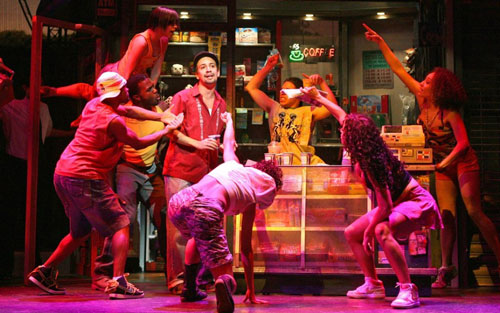
“In the Heights” Cast - 10th Anniversary Reunion (credit: Broadway.com)
When you were first introduced to “Hamilton,” what was exhilarating for you and what did that particular period of history mean to you?
The real reason I wanted to do it was I knew would be exciting experience creating and working with a writer like Lin Manuel (Miranda) and the choreographer, Andy (Blankenbuehler). Most of all when Tommy (Thomas Kail), our director, proposed it to me, I thought to myself, “What an odd topic but I’m game.” Then I went to see a reading and the piece spoke to me very strongly. It’s an emotional story even, though it’s about American history, it takes on a life which feels very universal. It's very touching and very poetic.
What became daunting was how to create that world in a respectful way; I wanted to make the absolute right choices for the production. We all met and talked a lot and I pulled together a lot of different images – paintings of our forefathers, Washington, Hamilton, reams of pictures of the American Revolution and pictures of the uniforms. The question was: How much do you want to be beholden to the actual period and yet do it as a contemporary telling of the story? I looked at the fashion then and now, and we agreed we wanted to do something that felt modern.
When we did the stage reading at The Public, because I had access to their wardrobe warehouse, I was able to use uniforms from other previous productions white corsets, breaches – trying to create a look that would hold together visually but it wasn’t the full design. I needed to transform the clothing to help the actors in the way they moved. I put the sisters in dresses; I tried to find an authentic weight for the uniforms. When we moved to Broadway, they were made with a lighter wool, and I was able to expand on what I had first come up with.
The question was how to acknowledge who the contemporary actors were with while letting the play out and make it appropriate for the characters. It became a marriage of those two qualities.
Lin Manuel’s main request was Hamilton be dressed in green, the color of money. Another element was to start out doing the costumes in a cream more of a neutral color – which gave us a blank slate, and then as each principal character was identified, color was added when they changed into another character.
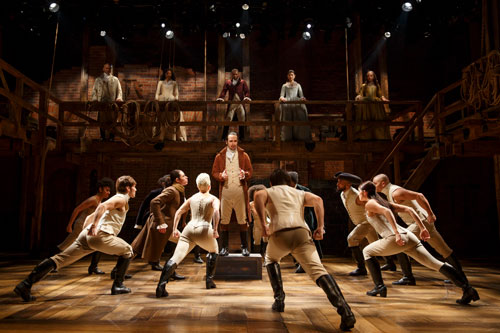
“Hamilton” on Broadway
When you designed the costumes for “The Wiz Live!,” you’ve said you were trying to see through the eyes of Dorothy, a teenage girl –
It was more about what the expansive nature of a teenager’s mind might create if she imagined who the Wiz is or Emerald City or Glinda. This fantasy world was conceived as being seen through the eyes of a young girl and all that she has been exposed to in her life. She might imagine a magical witch with a bright yellow fabric-optic dress which lights up – and all these fantastic lovely people in crazy hip clothes.
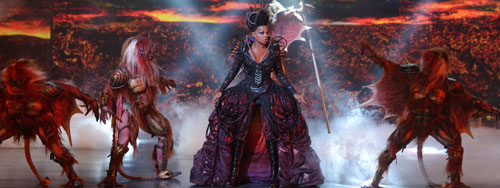
“The Wiz Live!” Paul Tazewell Emmy Award Winner for Outstanding Costumes
You chose Anthony van Dyke as part of The Artist Project for the Metropolitan Museum of Art. Do you find a lot of inspiration in paintings?
Especially if it’s a period piece I’m working on. I’ll examine the paintings from the same period to see what people wore, how the clothing was worn, and what it's saying about the person in the painting. Before photography, painting was the most accurate way to document clothing and style. Painters through their ability to paint can show us the quality of silk or satin, what the fabric felt and looked like. They understand how light works off materials, and why it transcends beyond just what they’re wearing.
For more contemporary projects I look at photos. For any period where clothing still exists, I examine vintage clothing; that is the ultimate source of reference. But it then is on me to make the character choices along with the accuracy of the period, and blend that with the idea of how to interpret the characters. I try and encapsulate all that into my costume work.
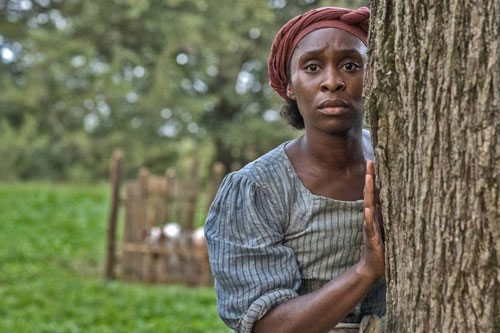
“Harriet” (credit: Focus Features) Cynthia Erivo
How did you develop your eye to see how clothing reflects color and light?
I started painting and drawing from an early age. As a family we’d see films like “Mary Poppins,” a lot of Disney features. Other kinds of fantasy films, it all went into a kind of “bank” I can now draw from when I’m thinking about what I’m designing, it comes in a visceral way.
As all designers, my visual experience allows me to provide something for the lighting designer, the set designer, the director, the cast, so we’re all going towards the same result.
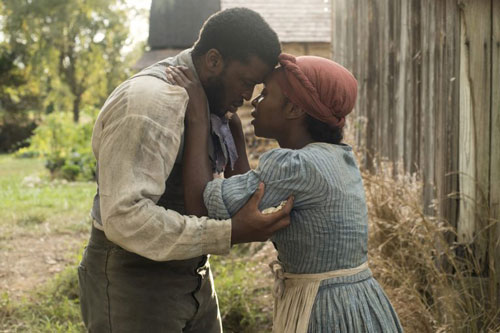
“Harriet” (credit: (Focus Features) Cynthia Erivo (Harriet) and Zackary Momoh (John Tubman)







































